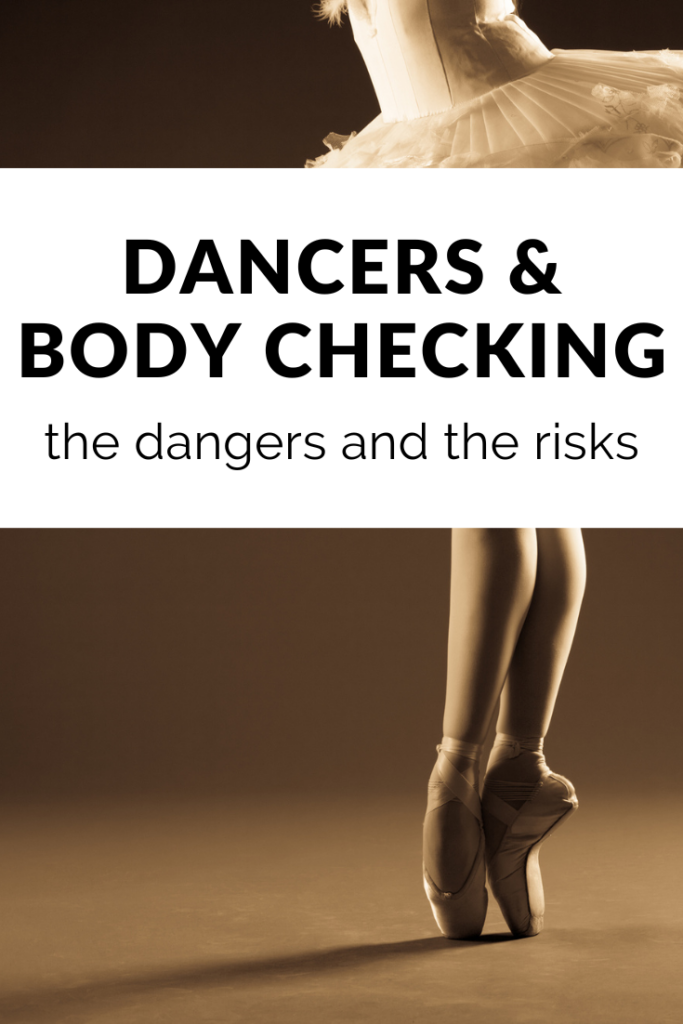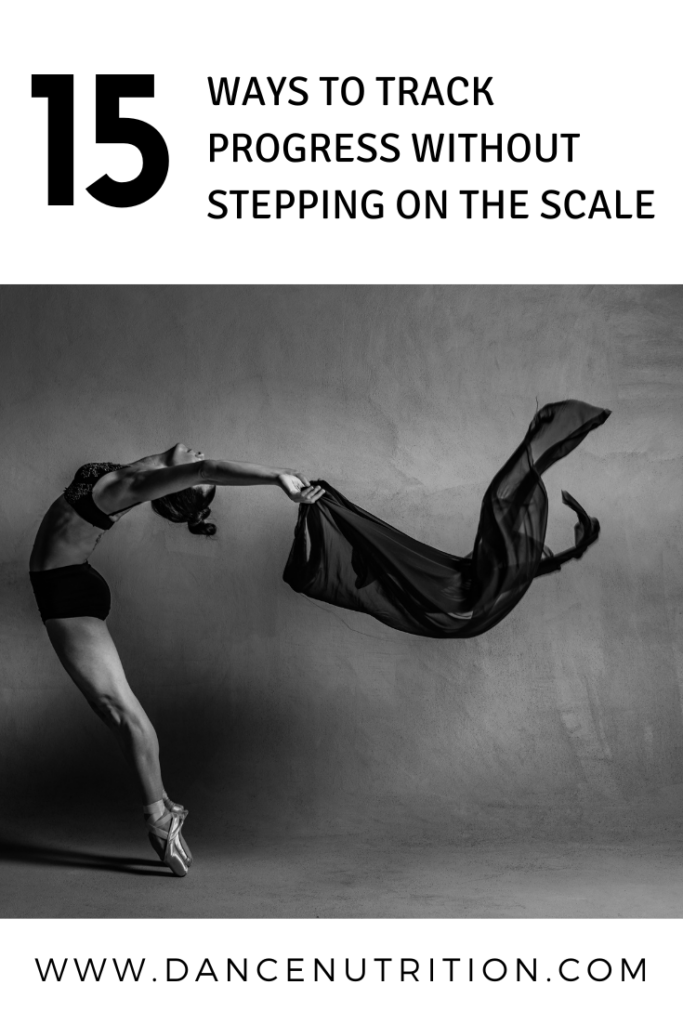You’ve begun the work of unraveling food rules. Perhaps you’re ready to end the war with your body, and more than ever, are interested in creating a healthier relationship with food. My work with dancers involves dismantling dieting behaviors (especially those tricky “clean” eating lifestyles). Contrary to what some might feel is the role of a dietitian, I never prescribe rules surrounding what, when, or how much a dancer eats. But there is one rule which I do encourage dancers to follow:
Get off the scale.
Dancers need to stop weighing themselves. But this is often easier said than done. Diet culture frequently encourages the reliance on tracking behaviors (particularly body weighing, calorie counting, and/or food journaling). And what’s worse is the trickery of wellness culture, which twists these behaviors and reframes them as tools that can assist with regaining trust in your body. Strip away the fancy jargon and trendy “biohacking” goals (content warning: disordered eating habits) and we’re left with the same ‘ol diet-y methods that perpetuate the reliance on external sources to dictate how we eat, how we feel, how “healthy” we are, and/or how we look.
But are these methods of surveillance actually needed to keep us “on track?” And if not relying on them, then how assess whether our habits are “working?” Should dancers be tracking their macros? Counting calories? Or, tracking their weights daily? Let’s dive in.
Dancers need to get off the scale
There are many reasons why dancers need to stop weighing themselves. For starters, body weight doesn’t reflect health or performance potential. We know that dieting not only fails 98% of the time with most regaining their weight after just 6 months but also, it’s one of the leading contributors to the development of eating disorders. In fact, those who sustain long-term weight loss (often deemed “successful” in their dieting efforts) are known to partake in habits that parallel those of an eating disorder.
Body weight is also very much impacted by factors out of our control. You can read more about this here, but remember that attempting to maintain a body weight that is too low for your natural body type fights biology. Your set-point weight is a range at which your body feels most comfortable. In other words, this is a weight (range) that can be maintained without needing to rely on restrictive eating plans or exhaustive exercise routines. This weight is pre-determined genetically and largely influenced by more than just diet and lifestyle (access to fresh foods and access to quality medical care are just a couple of examples). Other factors can impact your body weight on any given day, including:
- Your hydration status.
- Your digestive regularity.
- Hormonal balance.
- Muscle mass and strength training.
The bottom line: the number on the scale tells you very little (if anything) about your body and about your performance potential. With dieting and over-exercising being risk factors for eating disorders and disordered eating, dancers are incredibly vulnerable to the mental, emotional, and physical consequences of partaking in behaviors like body-checking.
The fears over not tracking
Tracking body weight, along with counting calories or keeping a strict food journal, can offer dancers a sense of control. With this control also comes a degree of comfort. You may have been taught, for years, that these numbers and trends are your evidence for a plan that “works.”
Perhaps you feel that these methods are the tools that prevent you from losing control over your food choices and ultimately, your body size. Relinquishing any of these behaviors can feel very scary. But realize this: the comfort experienced from weekly (or daily) weighing, along with that experienced from food tracking is, in the short term, fleeting, and in the long term, limiting. Bottom line: weight tracking and food monitoring come with risks.
The dangers of dancers and body checking
Body checking involves key behaviors that often indicate signs of both body image dissatisfaction and an eating disorder. These habitual acts include weighing, measuring, checking one’s body size in the mirror, and frequently pinching areas on one’s body. According to NEDA, “people who develop eating disorders are more likely to report higher levels of body image dissatisfaction.” Unlike classic symptoms of an eating disorder, like restricting, bingeing, or purging, body checking doesn’t cause immediate physical harm.
But there are risks involved with body checking. For one, it increases the urge to partake in eating disorder behaviors and perpetuates the restrictive mindset. Also, body checking and food tracking are external cues that replace opportunities for you to build body attunement. The more you rely on these external cues to dictate how you’re eating and feeling on any given day, the further you move from your intuitive cues of hunger, fullness, and satisfaction.
Swap the scale with curiosity and discovery
Our bodies are, for the most part, designed to balance their needs: energy needs as just one example. When we maintain a set point weight range, or, a weight that can be maintained without the use of restrictive eating habits or exhaustive exercise routines, we’re likely to achieve appetite regulation. This ultimately sets us up to more successfully honor feelings of hunger and fullness, along with our body’s basic need for nourishment (like proactively eating a snack to prepare for an upcoming rehearsal).
How can dancers stay “on track?”
First, re-define your goals. Meal surveillance, as set forth by diet and wellness culture, involves the monitoring of our food choices for the goal of manipulating (most often, shrinking) our body’s weight, shape, or size. We also see this in patterns of orthorexia or the obsession with eating “healthy.” This restrictive lifestyle requires a great deal of dietary surveillance. Instead of pursuing these options, consider how your life can look if choosing to build a supportive relationship with food. Here’s an article to help you envision exactly this.
Build your Body of Evidence
There’s no doubt that evidence helps us evaluate our behaviors. For the dancers who work with me, hindsight is always 20/20. When we evaluate the evidence set forth by past restrictive dieting, we uncover the evidence of experience; the fact that patterns of under-eating eventually lead to feeling out-of-control around food. Being aware of the unsupportive nature of these behaviors is the first step in reducing the urge to body-check or meal tracking. Click here to learn more about building The Healthy Dancer® Body of Evidence.
I’ve previously discussed the differences between meal planning and food journaling, and how these can be either helpful or unhelpful depending on the circumstance. Utilizing a food journal might be helpful throughout the process of intuitive exploration, as dancers work to identify hunger, fullness, and satisfaction cues. But even in these instances, food journaling is suggested only as a temporary tool that can eventually be relinquished when self-trust is achieved. As mentioned earlier, the reliance on these external tools and behaviors drives you further from building self-trust; the trust that can eventually help you to eat and move in a way that supports true energy balance.
15+ ways to monitor your progress
To build your body of evidence, consider these methods that you can use to reevaluate your progress.
- Identify hunger cues. Feeling hunger cues ebb and flow throughout the day is a great sign of appetite regulation. More importantly? Honoring those hunger cues with a meal or snack.
- Proactively fuel your body consistently throughout the day, despite a busy and active dance schedule.
- Identify feelings of comfortable fullness. As your body replenishes its energy stores, identify a comfortable level of fullness that can last until your next meal or snack.
- Evaluate your ability to eat mindfully. Now, I’m not referring to that diety-y version of choosing only “clean” options. I’m referring to your ability to slow down at meals. When your decisions at meal and snack times feel mindful, you eat with fewer distractions and are more likely to tune into the food’s different components (tastes, aromas, textures, etc.) l.
- Identify a reduction in obsessive food thoughts.
- Evaluate your mood. Can you feel calm despite not knowing the number on the scale?
- Are you able to view food through a neutral lens, rather than labeling choices (and yourself) as “good” or “bad?”
- Are you able to reduce mindless grazing throughout the day? In doing this, you’re building meals and snacks with foods that are both filling and satisfying to you.
- You’re able to keep those “trigger” foods at home without fear of “over”-doing it.
- You’re experiencing less guilt after eating.
- You feel more confident as a dancer.
- You feel stronger in class.
- You’re endurance improves. A quick indicator could be the ability to complete petit allegro without feeling overly fatigued.
- You’re dancing and cross-training feel fun, not punitive.





